Hampi, bounded by the Tungabhadra river on one side and hills on the other three sides, was the former capital of the Vijayanagara (City of Victory) Empire. The ruins have now been classified by UNESCO as a World Heritage Site (listed as the Group of Monuments at Hampi).
Granite boulders of varying shapes dominate the landscape around Hampi.
This unique and fascinating terrain is the result of three thousand million years of erosion (sun, wind, and rain).
Historians have split the ruins into two sections – Sacred Centre and Royal Centre.
SACRED CENTRE
The section includes the monuments enclosed between Hampi Village, Hemakuta Hill, Matanga Hill, and Gandhamadana Hill. Although Vitthala Temple does not fall within these boundaries, it is has been included within this group of monuments.
Courtesan’s Street
This colonnaded street, leading to the Achyutaraya Temple Complex, used to be a thriving market for precious stones.
Pushkarni
This stepped tank, east of the Courtesan’s Street, was popular amongst its patrons during the warm summer afternoons.
The rectangular tank has a small pavilion in the middle and steps along all the four banks.
Achyutaraya Temple Complex
This temple complex, between the Gandhamadana and Matanga hills, was built in 1534 by Achutarya’s BIL, Hiriya Tirumalaraya.
The complex is entered through a set of almost identical gopuras.
Achyuta Raya was the younger brother of Krishna Deva Raya, whom he succeeded in 1529.
This complex is also known as Tiruvengalanatha Temple Complex.
A 100 Columned Hall with intricately sculptured pillars occupies the NW corner of the complex.
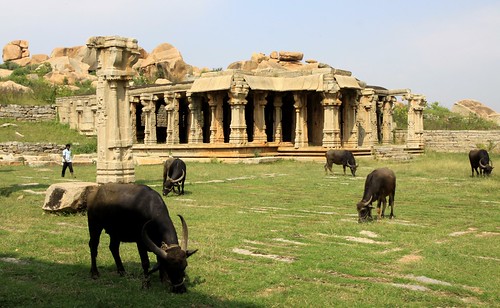
Buffaloes grazing outside the 100 Columned Hall
Vithala Temple Complex
This complex, situated on the northeastern part of Hampi, is one of the predominant monuments within the Sacred Centre.
The temple hosts the annual Purandaradasa festival.
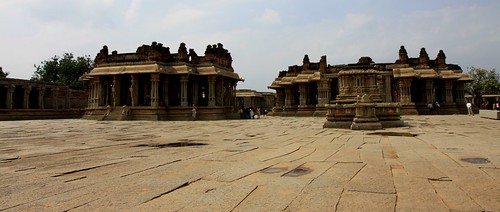
View of the complex from the main gopuram
One of the key attractions within this complex is the Stone Chariot or Ratha Temple. This monolithic Garuda temple resembles the temple chariots (rathas) in which temple idols were traditionally taken out during festive occasions.
There are free standing mandapas on either side of the Garuda shrine. The one on the southern side is the finest of the two, with intricately carved pillars on all sides.
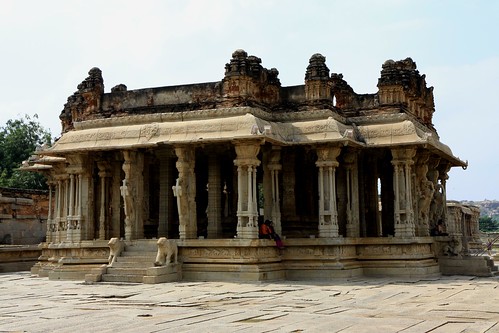
Freestanding Mandapa (Southern)
It has a raised dais surrounded by Yali pillars.
The 100-columned Hall next to the Southern Gopuram has a trilingual (Kanada, Tamil, Telugu) Krishnadevaraya inscription that has been dated 1516.
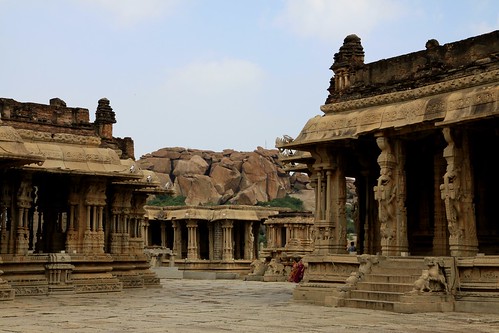
View from the 100-columned Hall
The Main Shrine was originally built with just one enclosed Mandapa. An open Mandapa Extension was added in 1554.

Mandapa Extension entrance, Main Shrine
Sunset – Hemakuta Hill
Hampi is known for its glorious sunrises and sunsets.

View of the Tungabhadra Valley
Hemakuta and Matanga hills are popular sites to catch the setting/rising sun.
Due to the proximity to the village, sunrises can be a stinky affair ! The best access to the hill is from Sasivekalu Ganesha. Avoid the urge to take the short cut which starts next to the Virupaksha Temple.
Virupaksha Temple
This temple, also known as Pampapati Temple, is the heart of the Hampi Bazaar. As the old Hampi saying goes ‘All roads lead to Virupaksha Temple’.
The temple is dedicated to Virupaksha (Shiva) and his consort Pampa (a local deity).
Lakshmi, the temple elephant, is a star attraction at the temple.
The mandapa ceiling is covered with splendid paintings, divided into panels.
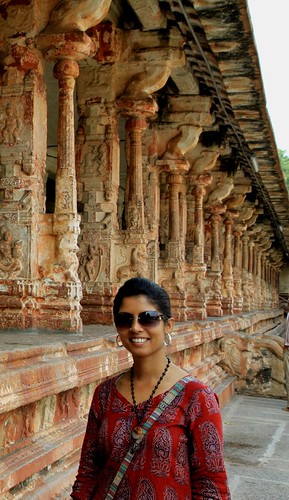
Outside Krishnadevaraya’s coronation mandapa
Sasivekalu Ganesha
This 2.4 m high monolithic sculpture of Lord Ganesha is located at the junction where the road from Hampi branches into two – one going to Hospet and the other to Kamalapura.

View of Sasivekalu Ganesha mandapa from Hemakuta hills
Sasivekalu means ‘Mustard seed’ in the local dialect.
Kadlekalu Ganesha
About 100 m north of Sasivekalu Ganesha, stands the 4.5 m high monolithic Kadlekalu Ganesha.
Kadlekalu means ‘Gram’ in the local dialect.
Hemakuta Hill Shrines
The Hemakuta Hill lies south of the Virupaksha temple. The best way to access the hills is from Sasivekalu Ganesha – not the shortest, but definitely the cleanest!

View of the Tungabhadra valley from Hemakuta Hill
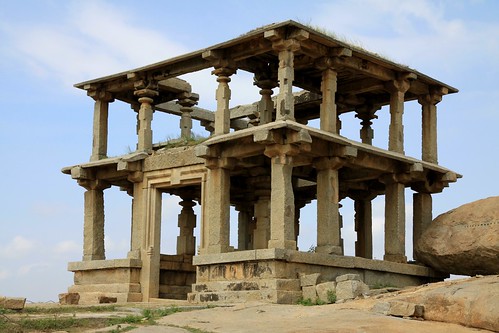
Double Storeyed Gateway atop the hill
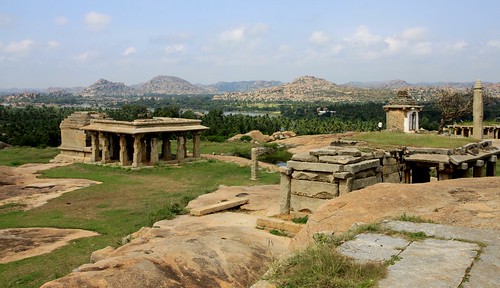
View from the Double Storeyed Gateway
The shrines, dating from pre and early Vijaynagara period, are located within a walled complex on the hill.
These shrines display the typical Deccan architecture of the 13th and 14th centuries.
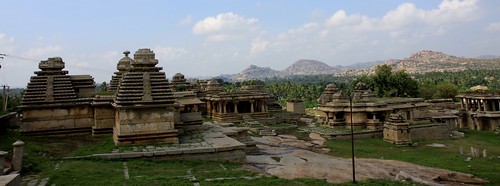
Hemakuta shrines (Dravidian style)
These shrines have simple Shiva lingas in the inner sanctums.
Krishna Temple Complex
This complex was built in 1515 by Krishnadevaraya to commemorate his victory over the Gajapati rulers (of current day Orrisa).
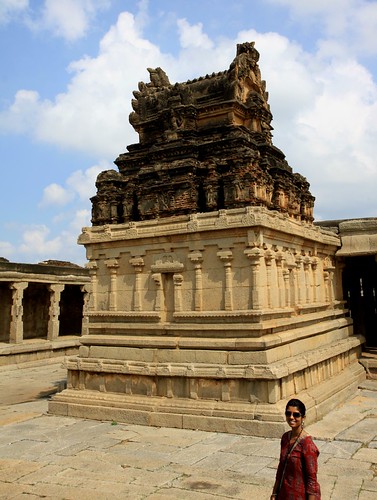
At the back of the Main Shrine
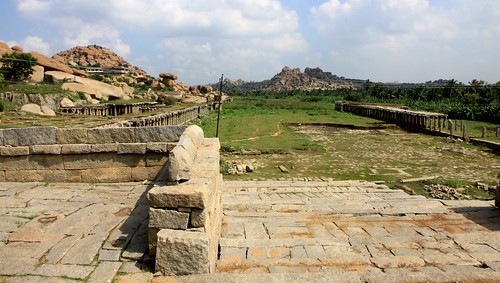
Bazaar Street opposite the complex
ROYAL CENTRE
Zenana Enclosure
Zenana Enclosure is a fortified quadrangle housing several monuments. Although Zenana means ‘Harem’, there is no historical evidence to justify the name.
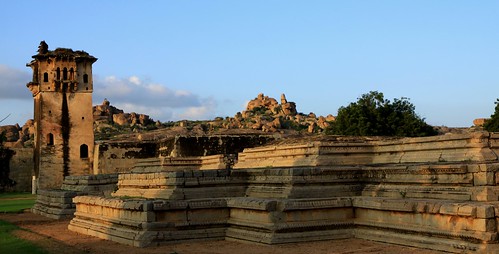
Watch Tower and the Queen’s Palace
The Lotus Mahal, one the key attractions of the Royal Centre, is a beautiful pavilion with an amazing architectural synthesis of Hindu and Islamic styles.
It gets its name from the lotus bud carved on the vaulted ceiling.
This pavilion is the best preserved monument in the Royal Centre.
Elephant Stables
This 11 chambered building, east of the Zenana Enclosure, was used for housing elephants.
Underground Virupaksha
This temple dedicated to Virupaksha was once partially buried. Hence the name (duh!). It is set well below ground, resulting in the temple interiors being flooded with water from the surrounding fields. This served as the private temple for the royal household.
Noblemen’s Quarters
This section consists of 15 palace ruins, which were occupied by the courtiers of Vijaynagara. The entire complex can be viewed from a Vista Point atop a nearby boulder.
Mohammadan Watch Tower
This watch tower is located across the road from Noblemen’s Quarters.
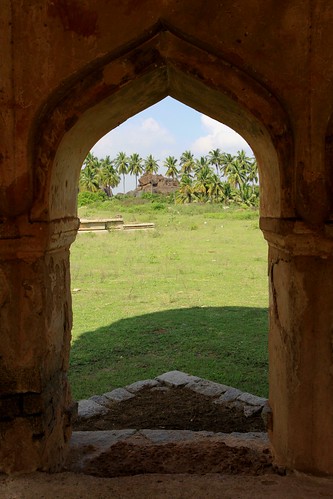
View from the ground floor pavilion
A stairwell in one corner of the pavilion leads to the top floor.
Chandrashaekhara Temple
This 16th century temple is dedicated to Lord Shiva.
Queen’s Bath
Despite the name, this Indo-Saracenic water pavilion was built for the courtiers and their lady companions.
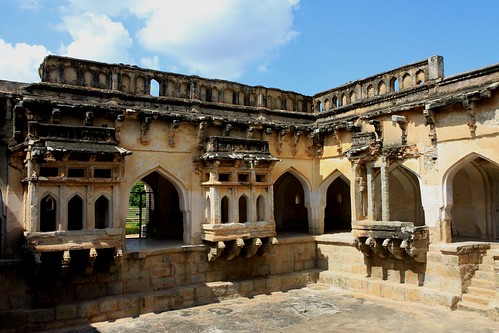
Balconies with arched windows, Queen’s Bath
Hazararama Temple
This temple dedicated to Lord Rama (Ramachandra) served as the private temple for the Vijaynagara Kings. It was built by Devaraya I in the 15th Century.
The outer facade of the compound walls depict processions of elephants, horses, dancers, and soldiers.
Scenes from the Ramayana have been carved on the inner facade of the compound walls.
Mahanavami Dibba
Also known as Dasara Dibba, this layered platform used to be the center of the celebrations during the nine-day Navaratri festival.
It provides excellent panoramic views of the surrounding area.
Square Stepped Tank
A few meters south of Mahanavami Dibba lies the aqueduct fed stepped tank with symmetrically disposed flight of stairs.
Octagonal Bath
This bath has a large open Mantapa with a now defunct octagonal water feature.


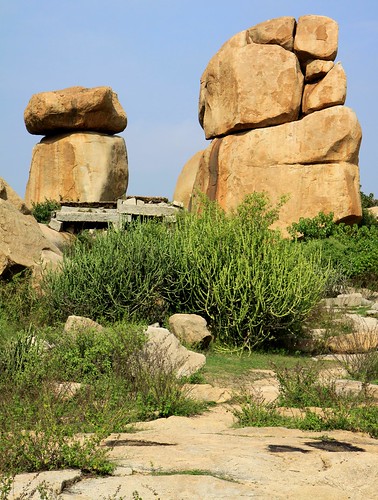
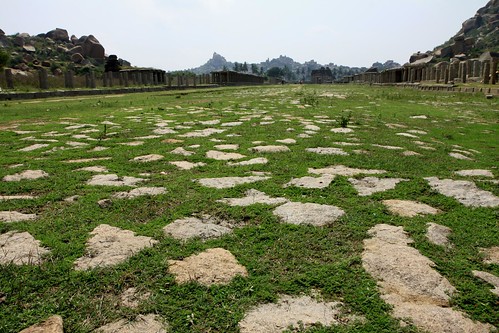
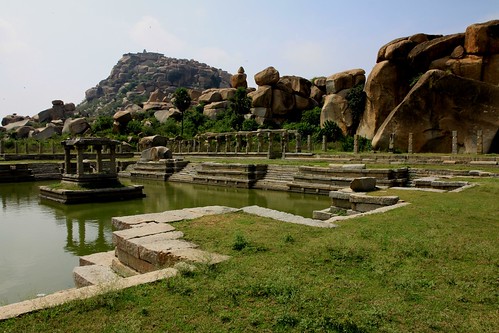


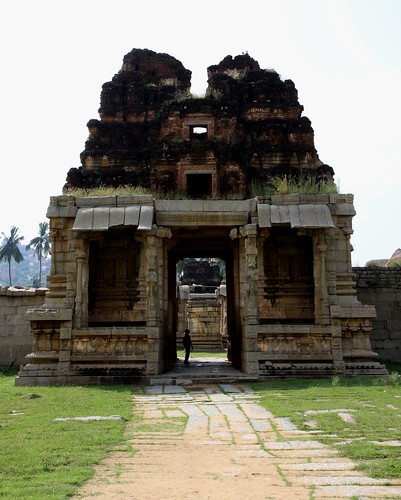
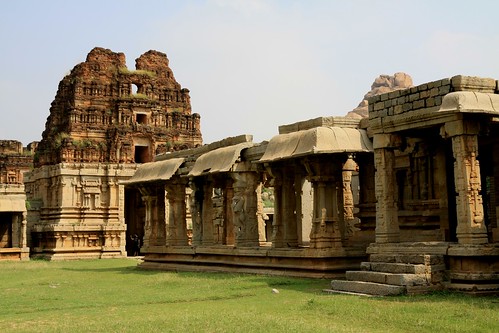
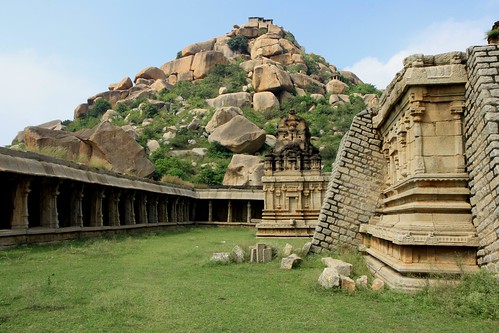
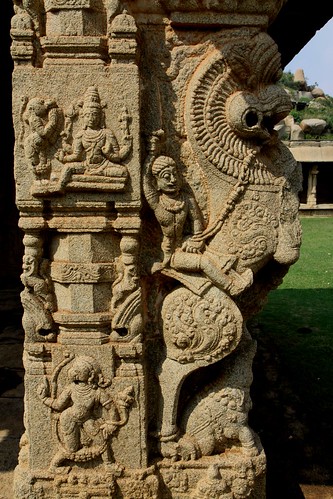
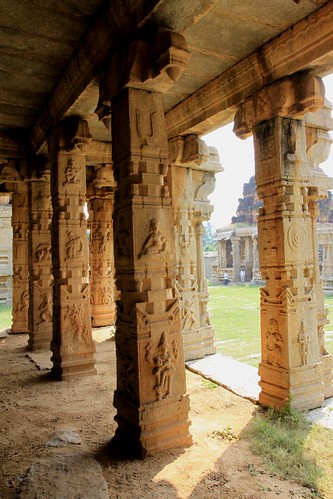
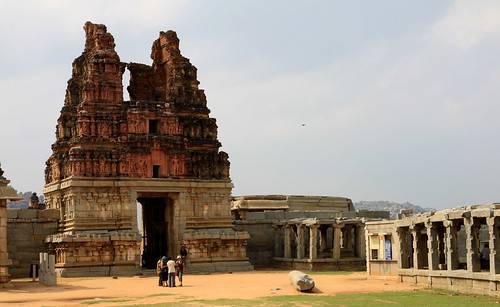
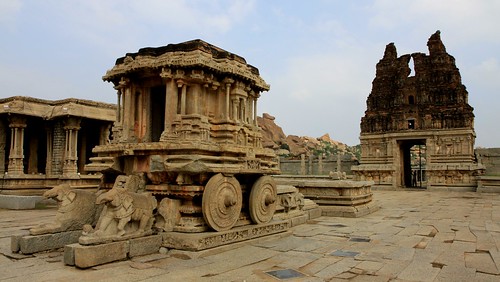
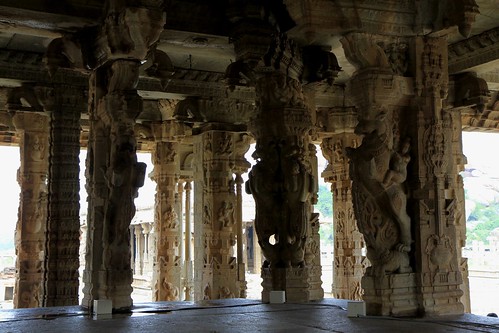
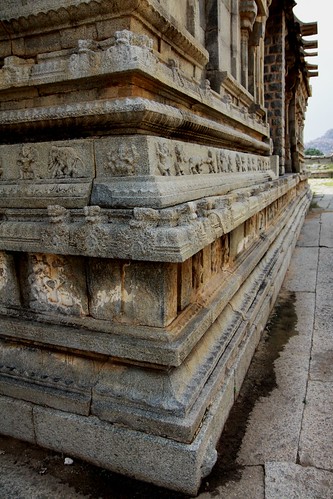

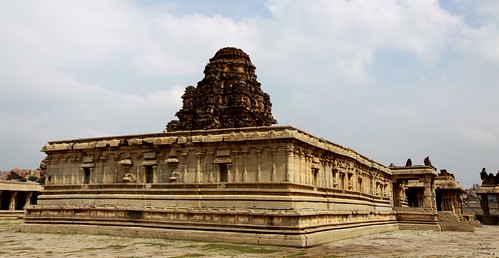
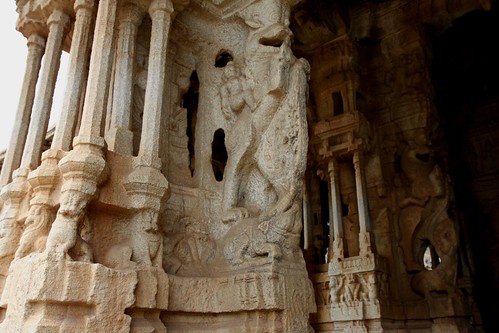
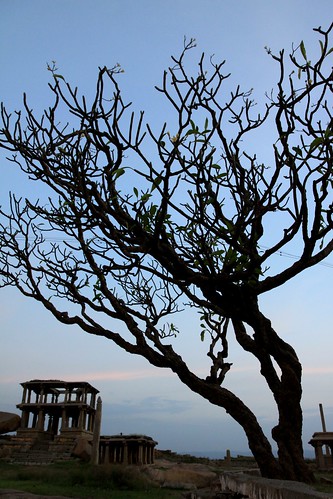
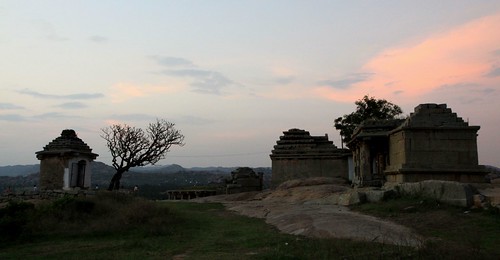
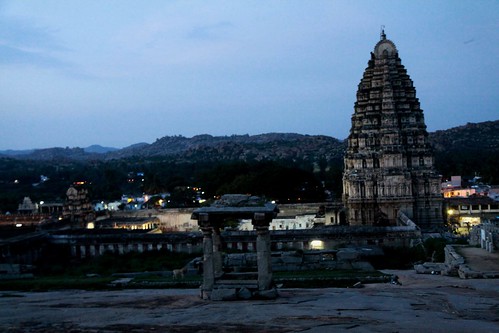


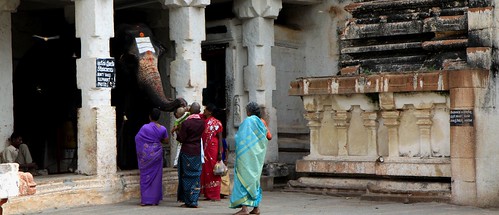

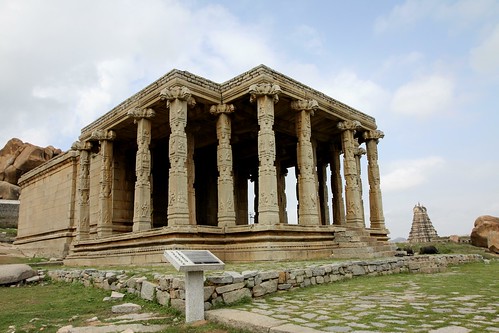
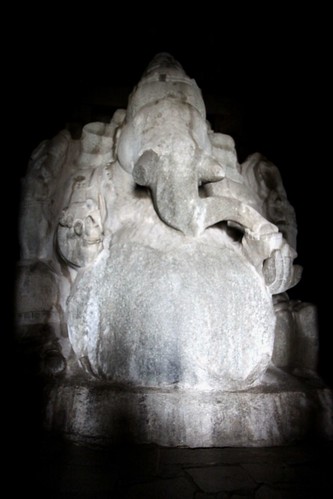
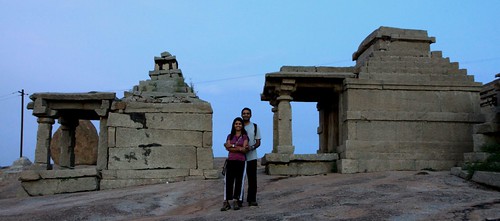
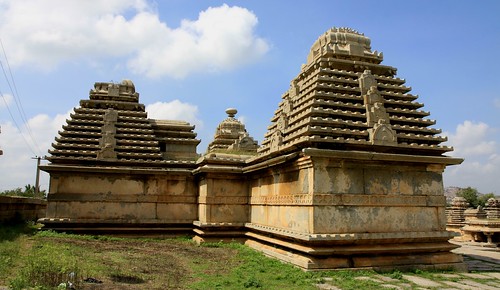

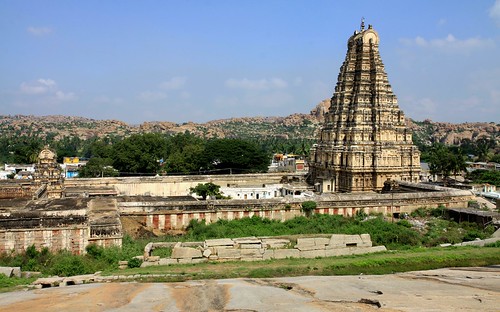
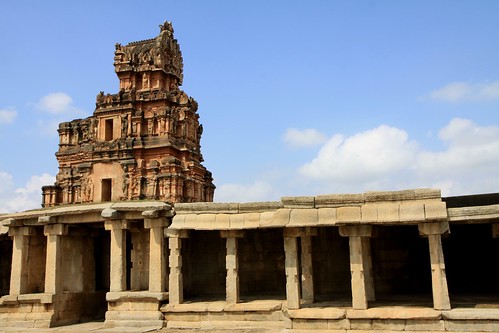


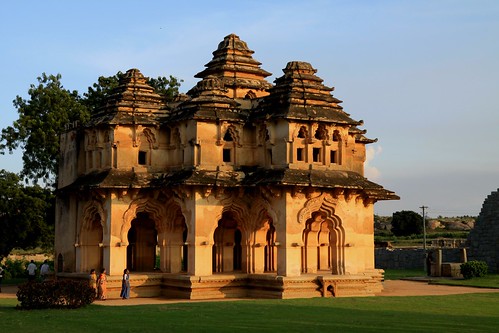

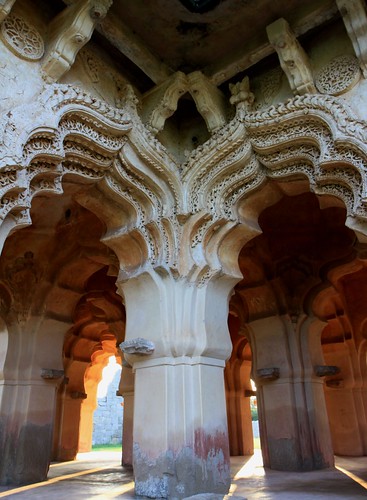

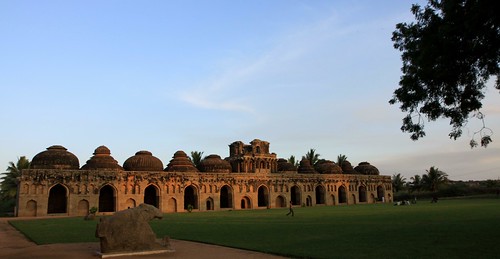
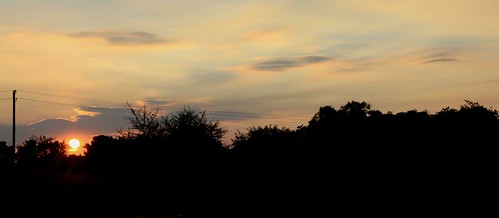


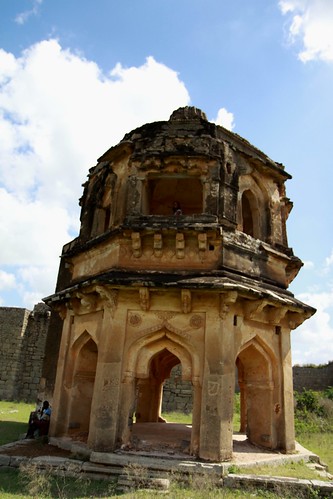

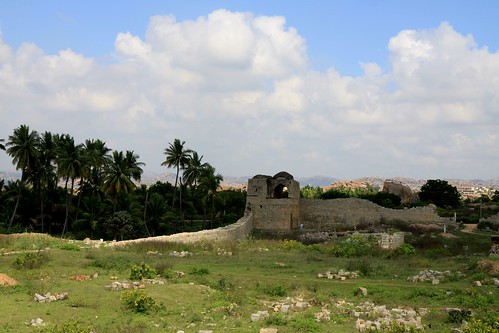

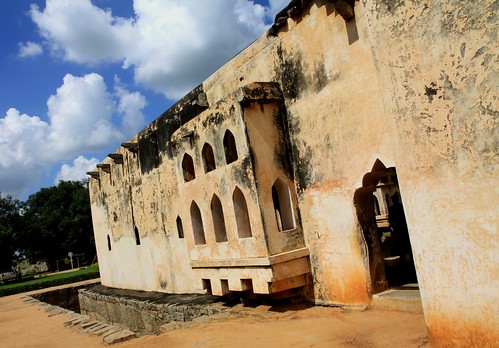

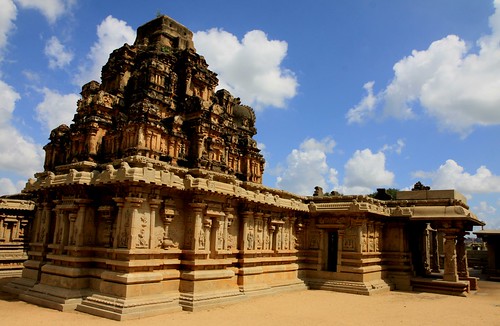
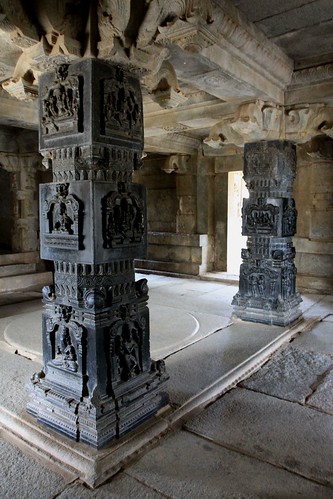
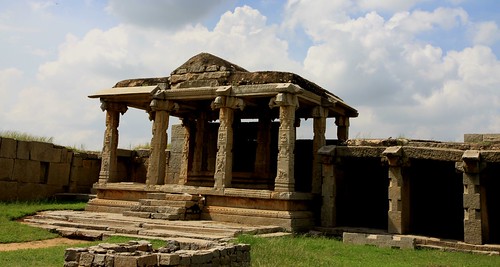

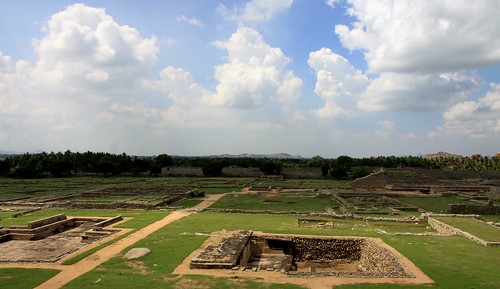

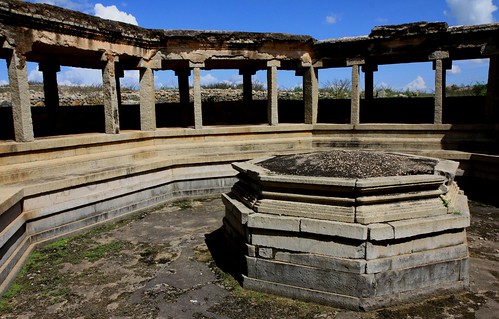

Nice pictures. reminded me of my own Hampi visit …. and so with most of your KA visit sites! Good to know you are travelling everywhere with enthu; just as you set out to do 🙂 … Best, KS
Thanks, KS.
We are enjoying the ride.
The other option (get back a 9-5) does not seem very appealing either 🙂 LOL